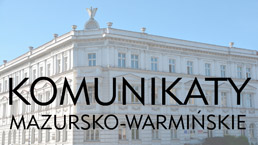Current issue
Online first
Special issues
Archive
About the Journal
Editorial Board
Editorial Council
Reviewers
Editorial guidelines
Publication ethics
Guidelines for reviewing
Remarks on “ghostwriting”
Copyrights and Open Access rule
GDPR Privacy Notice – for the authors of articles sent for publication in the "Komunikaty Mazursko-Warmińskie ("Masuro-Warmian Bulletin")
Contact
Price list
Naprom, Ostróda county (Gross Nappern, Kr. Osterode). The Cemetery from the Early
Medieval Period in the Light of Archival Data
Online publication date: 2016-05-08
Publication date: 2016-05-08
KMW 2016;291(1):3-10
KEYWORDS
Early Medieval PeriodOld PrussiansPolish-Masovian borderlandburialcustomscemeteriesarchival sourcesCarl Engel
TOPICS
ABSTRACT
The cemetery discovered in the village of Naprom, Ostróda County (former Gross Nappern, Kr.
Osterode) is not known in the archaeological literature. Contemporary knowledge of the necropolis comes
from the article: Prussians in the early Middle Ages and the outline of their material culture. The content can
be inferred that the discovered site was a vast necropolis, within which a large number of sepulchral objects
were uncovered. Some information about the discovery can be found in the articles by C. Engel published in
the daily press in the 1930s. (Königsberger Stadtspiegel, Johannisburger Zeitung). During the archival inquiry
carried out in the Archäologisches Landesmuseum Schloss Gottdorf in Schleswig (the so-called Rudolf Grenz’s
files) and the Museum für Vor- und Frühgeschichte in Berlin (the archives of the former Prussia-Museum)
interesting unpublished materials concerning the burial ground in Gross Nappern were found. During his journey in Ostróda and Lidzbark county in 1931 Carl Engel carried out a trial excavation.
In the trench two cremation graves covered with stone constructions were discovered. The potsherds were
the only artifacts found in the graves (on the basis of the description these can be dated back to the 11th – 1st
half of 13th c.). The owner of the grounds, where the graves were discovered reported that in the vicinity of
the excavated graves there used to be a barrow (it was destroyed around 1905, and the stones from the mound
were used during the construction of the barn). That was the reason why C. Engel came back to the village of
Naprom to excavate the destroyed barrow.
REFERENCES (6)
1.
Antoniewicz J., Prusowie we wczesnym średniowieczu i zarys ich kultury materialnej, w: Szkice z dziejów Pomorza. Pomorze średniowieczne, Warszawa 1958, ss. 121–159.
2.
Gaerte W., Tätigkeitsbericht der vorgeschichtlichen Abteilung des Prussia-Museums in Königsberg i. Pr. (pro 1931), Nachrichtenblatt für deutsche Vorzeit, 1931, Bd. 8, ss. 6–11.
3.
Engel C.,La Baume W., Erläuterungen zum Atlas des Ost- und Westpreusischen Landesgeschichte,Teil 1: Kulturen und Volker der Frühzeit im Preußenlande, Königsberg 1937.
4.
Wczesnohistoryczne cmentarzysko na Mazurach Pruskich, Z Otchłani Wieków, 1931, nr 6, z. 4–5,s. 71.
5.
Urbańczyk P., Archeologia etniczności – fikcja czy nadzieja, w: Archeologia w teorii i praktyce, pod red. A. Buko, P. Urbańczyka, Warszawa 2000, ss. 137–146.
6.
Werbart B., Kultura archeologiczna a tożsamość kulturowa – problemy synchronizacji, w: Archeologia w teorii i praktyce, Warszawa 2000, ss. 147–165.
Share
RELATED ARTICLE
We process personal data collected when visiting the website. The function of obtaining information about users and their behavior is carried out by voluntarily entered information in forms and saving cookies in end devices. Data, including cookies, are used to provide services, improve the user experience and to analyze the traffic in accordance with the Privacy policy. Data are also collected and processed by Google Analytics tool (more).
You can change cookies settings in your browser. Restricted use of cookies in the browser configuration may affect some functionalities of the website.
You can change cookies settings in your browser. Restricted use of cookies in the browser configuration may affect some functionalities of the website.




